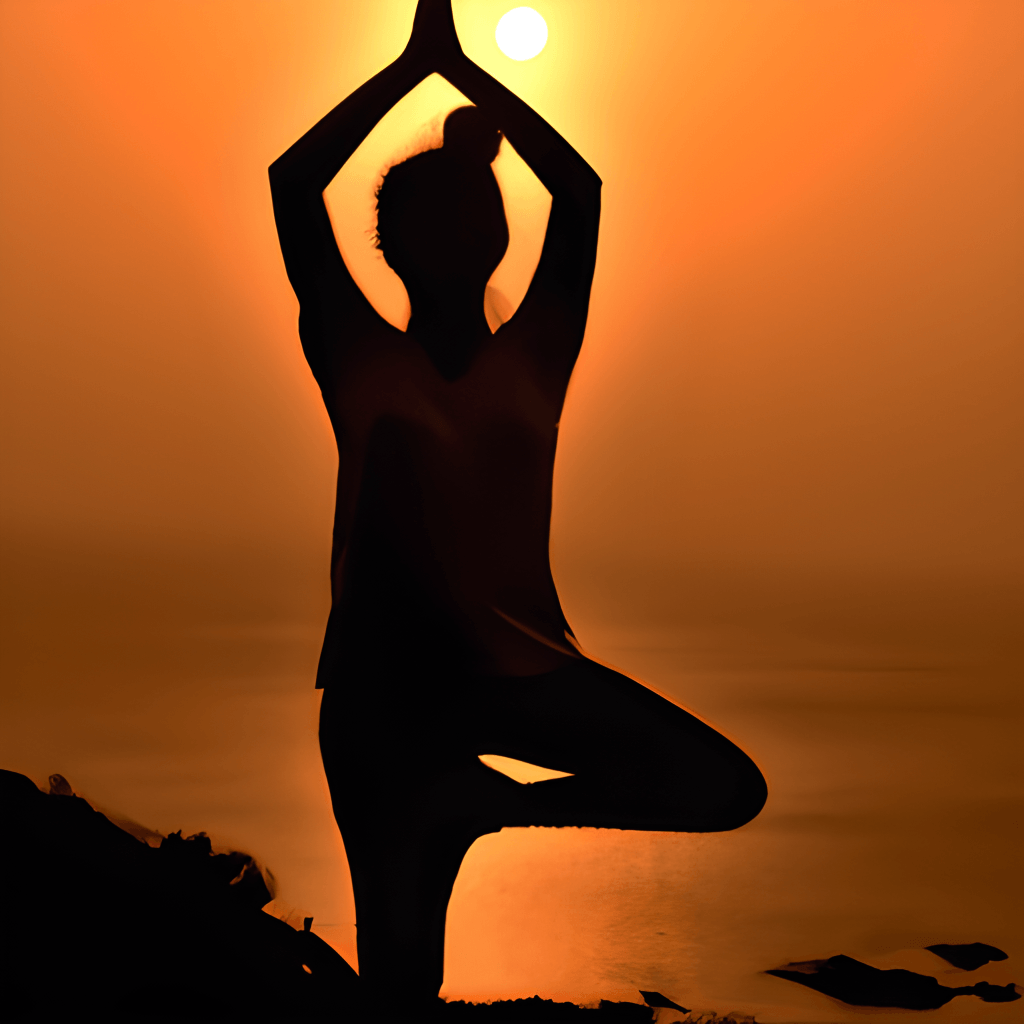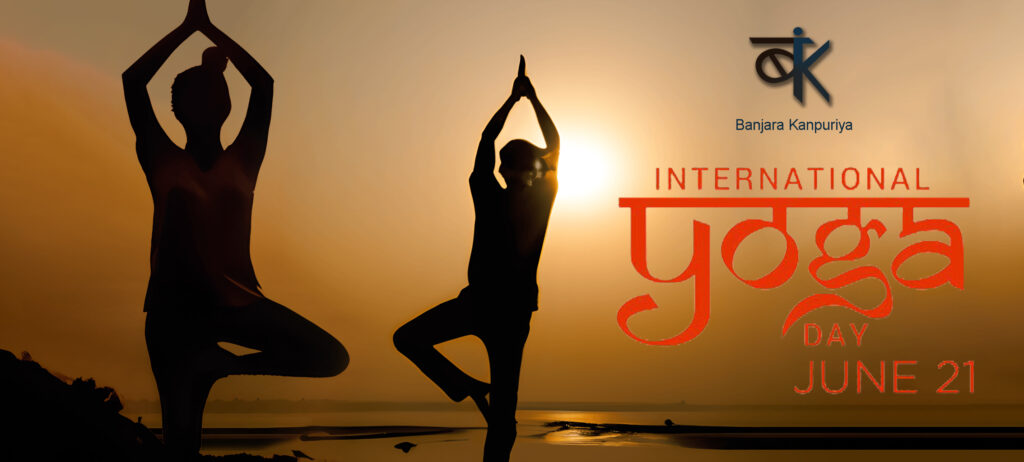Quick Guide
Yoga, a profound practice that promotes physical and mental well-being, takes center stage on June 21st as the world celebrates International Yoga Day. This special day, recognized by the United Nations, aims to raise awareness about the incredible benefits of yoga and inspire individuals and communities to embrace its transformative power. In this blog, we’ll explore the significance of Yoga Day and delve into the essence of yoga, its numerous benefits, and how you can incorporate it into your daily life.
The Significance of International Yoga Day

International Yoga Day was established in 2014 with the intention of emphasizing the importance of yoga as a holistic practice. It serves as a reminder that yoga is not merely a physical exercise but a path toward harmonizing the mind, body, and soul. This day encourages people from all walks of life to embrace the ancient wisdom of yoga and experience its profound impact on their overall well-being.
The meaning of Yoga
The word Yoga (or Yog) comes from the Sanskrit noun योग. Yoga is derived from the root yuj (युज्) “to attach, join, harness, yoke”.
At its broadest, yoga means to unite. So Yoga is a practice to control the senses and ultimately, the mind, by uniting the body with mind and soul.
The Essence of Yoga
At its core, yoga is a practice that combines physical postures (asanas), breath control (pranayama), meditation, and relaxation techniques. By integrating these elements, yoga cultivates a state of balance, mindfulness, and inner peace.
The asanas help improve flexibility, strength, and posture, while pranayama techniques enhance breath awareness and facilitate energy flow. Meditation and relaxation techniques quiet the mind, reduce stress, and promote mental clarity.
Benefits of Yoga:
The benefits of a regular yoga practice extend far beyond the physical realm. Here are some key advantages that yoga offers:
- Physical Well-being: Yoga enhances flexibility, strengthens muscles, improves cardiovascular health, and boosts overall physical fitness.
- Mental Clarity and Emotional Well-being: Through mindful breathing and meditation, yoga helps calm the mind, reduce anxiety, manage stress, and cultivate emotional resilience.
- Improved Focus and Concentration: Yoga practices, such as concentration techniques and mindfulness, enhance mental clarity and concentration, allowing you to be more present and focused in your daily activities.
- Enhanced Self-awareness: Regular yoga practice encourages self-reflection, self-acceptance, and a deeper connection with oneself, leading to improved self-awareness and personal growth.
Incorporating Yoga into Daily Life
Embracing yoga as a part of your daily routine doesn’t have to be daunting. Here are a few simple ways to incorporate yoga into your life:
- Start with Short Sessions: Begin your journey by dedicating a few minutes each day to yoga. As little as 10-15 minutes of practice can have a positive impact on your physical and mental well-being.
- Create a Sacred Space: Designate a peaceful corner in your home as your personal yoga space. This area should be free from distractions and evoke a sense of tranquility.
- Seek Guidance: Utilize online resources, yoga apps, or join local yoga classes to learn proper techniques and gain inspiration from experienced instructors.
- Practice Mindful Breathing: Incorporate moments of conscious breathing throughout your day. Pause, close your eyes, and take a few deep breaths, allowing yourself to become fully present.
- Find Joy in Movement: Incorporate yoga-inspired movements into your daily activities. Stretch, twist, and move mindfully as you go about your day, infusing a sense of mindfulness into even the simplest tasks.

As you have come this far, you seem to be certainly ready for doing Yoga. Let’s learn a quick way to yoga and good health???
As we move forward, we’ll not only understand the steps to do certain practice, but also we’ll discuss about the benefits we are going to get from it. So scroll down slowly as you understand the ways of Yoga.
Surya Namaskar: Embrace the Radiance Within
Let’s explore the transformative power of yoga, focusing on one of the most revered sequences of postures – Surya Namaskar, also known as Sun Salutation. Surya Namaskar is not just a series of physical movements; it is a complete mind-body practice that can unlock the key to good health and well-being. Join me as we delve into the intricacies of Surya Namaskar and discover the numerous benefits of each asana.
Understanding Surya Namaskar
Surya Namaskar is a dynamic yoga sequence that pays homage to the sun, the source of all life and energy. It consists of a series of 12 asanas (postures) performed in a specific order, synchronizing breath with movement. The practice dates back centuries and has been revered for its ability to rejuvenate the body, calm the mind, and awaken our inner vitality.
Step-by-Step Guide to Surya Namaskar:
- Pranamasana (Prayer Pose): Stand at the front of your mat, feet together, palms pressed together at your heart center. Take a moment to center yourself and set your intention for the practice.
- Hastauttanasana (Raised Arms Pose): Inhale, lift your arms up and arch your back, stretching your whole body upwards while keeping your feet firmly grounded.
- Hasta Padasana (Hand to Foot Pose): Exhale, bend forward from your hips, keeping your spine straight. Bring your hands down to the floor beside your feet or grasp your ankles. If needed, slightly bend your knees.
- Ashwa Sanchalanasana (Equestrian Pose): Inhale, step your right leg back into a lunge position, keeping your left knee bent and aligned over your left ankle. Look up and keep your palms firmly on the ground.
- Dandasana (Stick Pose): Retaining your breath, step your left leg back to bring your body into a straight line, like a plank. Keep your arms perpendicular to the ground, shoulders over wrists.
- Ashtanga Namaskara (Salute with Eight Parts): Slowly lower your knees, chest, and chin to the ground while keeping your hips slightly elevated. Eight parts of your body touch the ground—two hands, two feet, two knees, chest, and chin.
- Bhujangasana (Cobra Pose): Inhale, slide forward and lift your chest off the ground, using your back muscles. Keep your shoulders relaxed and your gaze forward.
- Adho Mukha Svanasana (Downward-Facing Dog Pose): Exhale, tuck your toes, and lift your hips up and back, forming an inverted V-shape. Relax your head and neck, and press your heels toward the ground.
- Ashwa Sanchalanasana (Equestrian Pose): Inhale, step your right foot forward between your hands, aligning your right knee over your right ankle. Look up and place your palms on the ground.
- Hasta Padasana (Hand to Foot Pose): Exhale, bring your left foot forward to meet your right foot, straighten your legs, and fold deeper into the forward bend.
- Hastauttanasana (Raised Arms Pose): Inhale, rise up, stretch your arms overhead, and arch back, as in Step 2.
- Pranamasana (Prayer Pose): Exhale, return to the starting position, palms pressed together at your heart center, and take a moment to feel the effects of this revitalizing sequence.
Benefits of Each Asana in Surya Namaskar:
- Pranamasana (Prayer Pose): This posture establishes a connection between mind, body, and spirit, preparing you for the practice ahead.
- Hastauttanasana (Raised Arms Pose): It stretches and expands the chest, promoting deep breathing and oxygenation. It also enhances flexibility in the spine, shoulders, and arms.
- Hasta Padasana (Hand to Foot Pose): This forward bend elongates the spine, stretches the hamstrings, and improves digestion. It also calms the mind and reduces anxiety.
- Ashwa Sanchalanasana (Equestrian Pose): This powerful lunge pose strengthens the legs, stretches the hip flexors, and improves balance. It also stimulates the abdominal organs and energizes the body.
- Dandasana (Stick Pose): Holding this plank-like position builds core strength, tones the arms, and improves posture. It also develops mental focus and stability.
- Ashtanga Namaskara (Salute with Eight Parts): This challenging pose strengthens the arms, chest, and shoulders. It also improves body awareness and cultivates humility.
- Bhujangasana (Cobra Pose): This gentle backbend opens the chest, stretches the abdomen, and improves spinal flexibility. It also invigorates the heart and enhances circulation.
- Adho Mukha Svanasana (Downward-Facing Dog Pose): This inversion pose rejuvenates the entire body by increasing blood flow to the brain. It strengthens the arms, legs, and core muscles while releasing tension in the spine.
- Ashwa Sanchalanasana (Equestrian Pose): Repeating this lunge pose on the other side helps balance the body and develops symmetry. It offers the same benefits as mentioned earlier.
- Hasta Padasana (Hand to Foot Pose): This forward bend deepens the stretch in the hamstrings, calves, and lower back. It also enhances flexibility and relieves fatigue.
- Hastauttanasana (Raised Arms Pose): Similar to the earlier instance, this pose expands the chest, stretches the body, and promotes deep breathing and increased vitality.
- Pranamasana (Prayer Pose): Returning to the starting position, this pose allows you to integrate the effects of the entire sequence, center yourself, and experience a sense of gratitude and calm.
The Key to Good Health:
Surya Namaskar, when practiced regularly, can be a key to good health. It strengthens and tones the muscles, improves flexibility, and enhances overall body coordination. The synchronized breathwork promotes a meditative state, reducing stress and anxiety. The sequence stimulates the cardiovascular system, boosts metabolism, and helps in weight management.Additionally, Surya Namaskar activates the endocrine glands, including the thyroid, adrenal, and pituitary glands, promoting hormonal balance. It improves digestion, detoxification, and the functioning of internal organs. The continuous movement of Surya Namaskar also enhances lymphatic circulation, aiding in the removal of toxins from the body.

Epilogue
International Yoga Day serves as a powerful reminder to prioritize our well-being and nurture our mind, body, and soul. By embracing the practice of yoga, we can experience its profound benefits and discover a path to inner harmony.
As we celebrate International Yoga Day, let’s embrace the transformative power of Surya Namaskar. This dynamic sequence not only nourishes the physical body but also nourishes the mind and soul.
Through the 12 asanas of Surya Namaskar, we experience the harmony of movement, breath, and meditation. So, let’s step onto our mats, salute the sun, and embark on a journey to wellness, one Surya Namaskar at a time.
So, on this special day and beyond, let’s celebrate yoga by dedicating ourselves to a regular practice, spreading awareness, and inspiring others to embark on this transformative journey.
Remember, practicing Surya Namaskar with proper alignment and honoring your body’s limitations is crucial. Consult a qualified yoga instructor if you’re new to yoga or have any specific health concerns. Let this International Yoga Day be a stepping stone towards a healthier and more vibrant life.
Namaste!

























+ There are no comments
Add yours